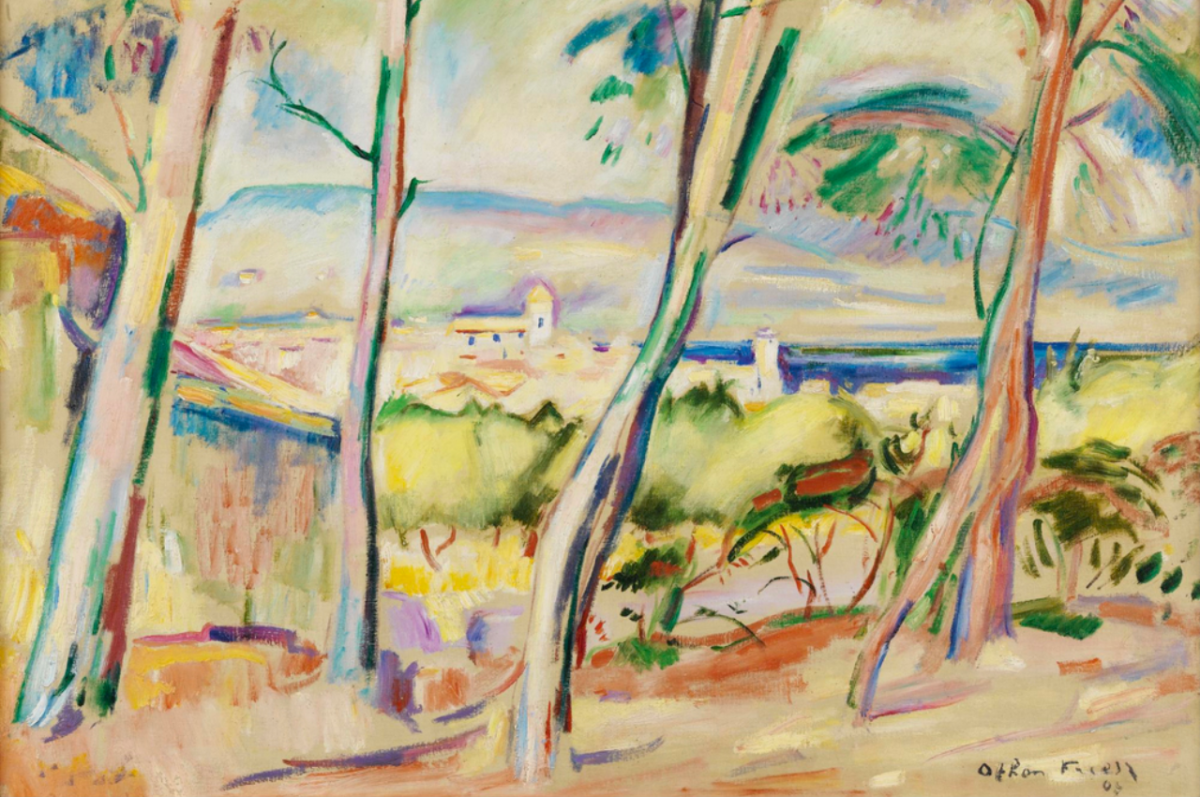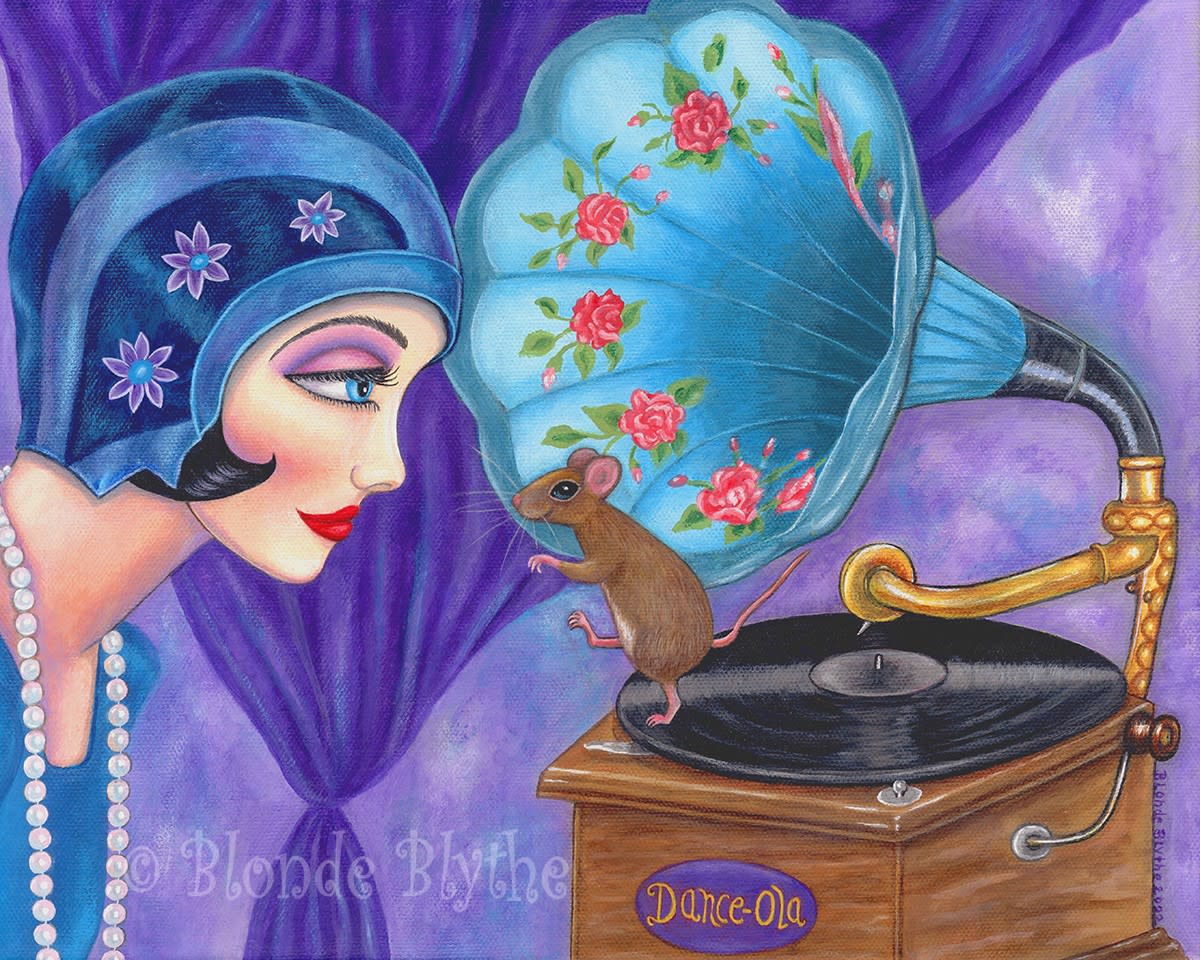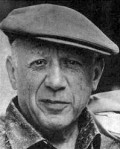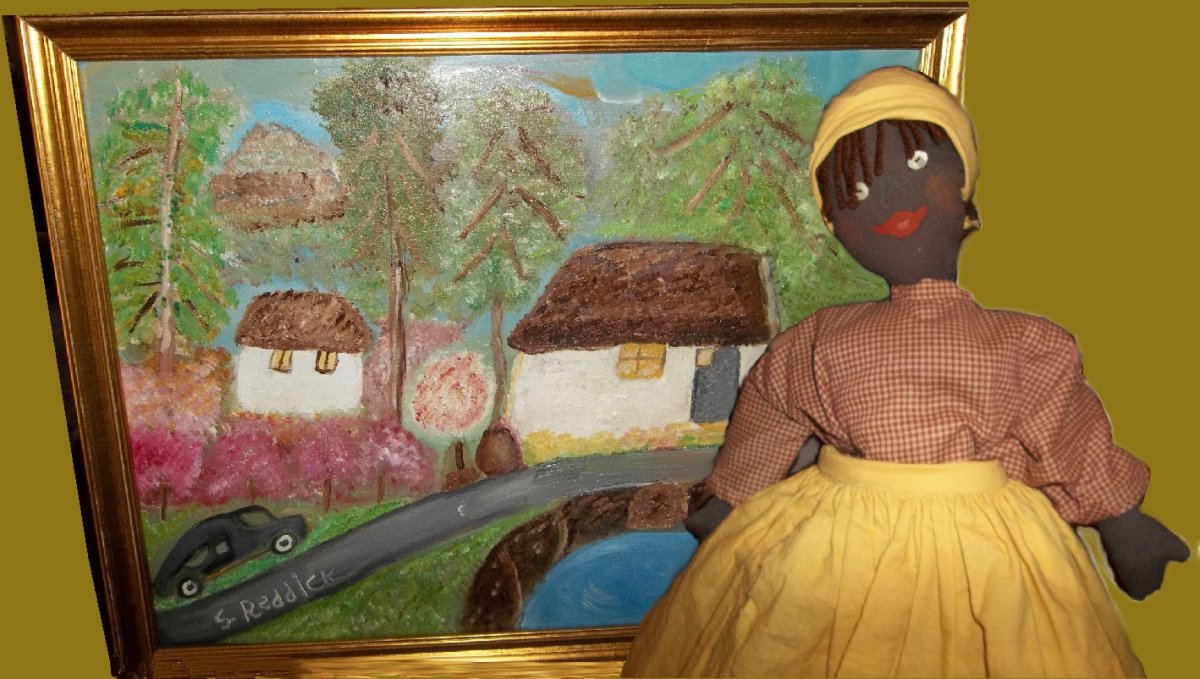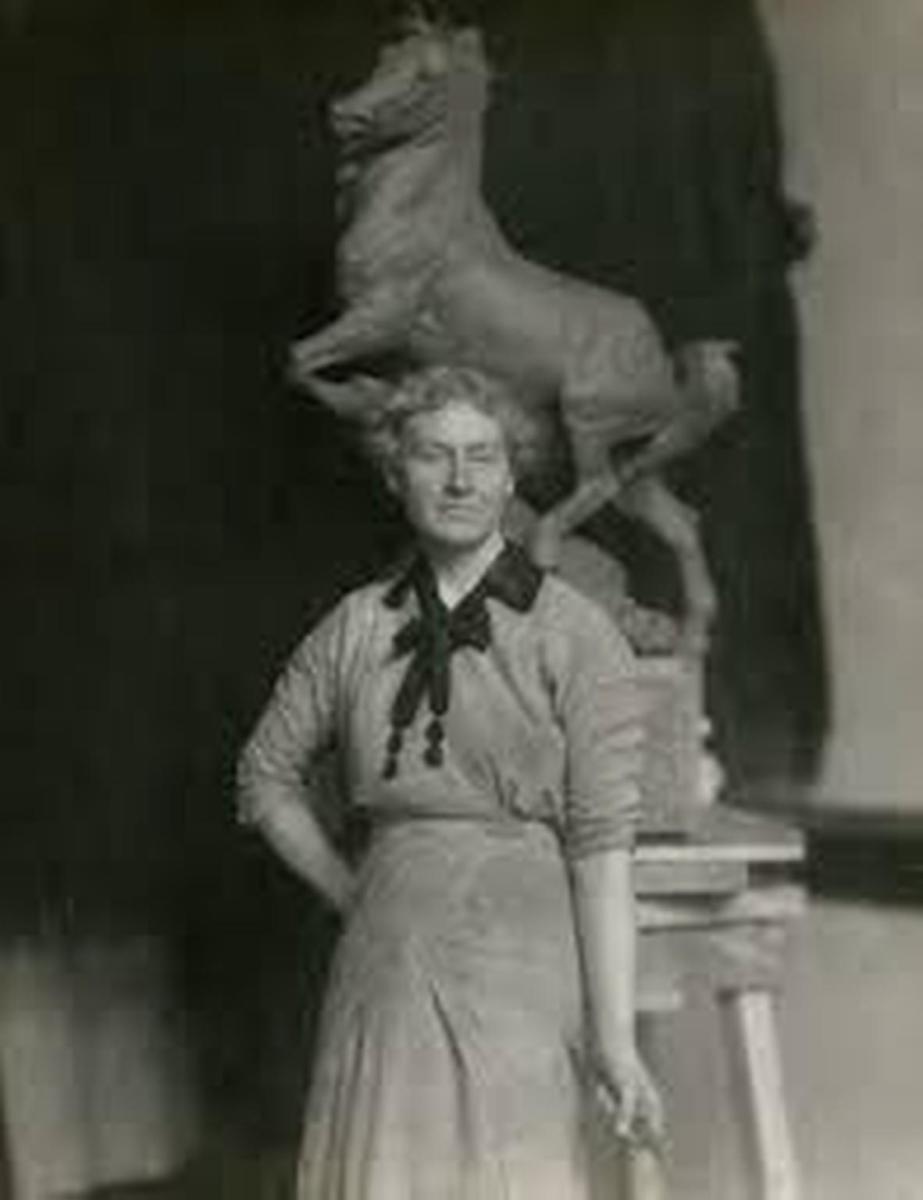The Clyfford Still Museum in Denver, Colorado
The Clyfford Still Museum in Denver, Colorado houses and exhibits an incredibly intact body of work by Still from his 50-year artistic career. It is organized chronologically to demonstrate the stylistic evolution from Still’s early paintings and drawings to his later masterpieces.
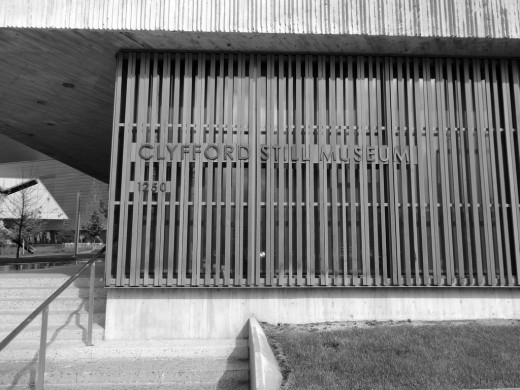
Abstract expressionism – an American art movement in painting, developed in New York in the 1940s post–World War II; emphasis on subconscious creation and anti-figurative aesthetic. (Wikipedia)
Early Work
Upon entering the first gallery, viewers are greeted by several representational paintings of plains and farmland. Still spent his childhood living in both Spokane, Washington and Alberta, Canada, and these early paintings depict the world he grew up in. Even so, the paintings exhibit a unique style; a looseness with the rigid forms of farm buildings and trains, early signs of the abstract expressionist style Still would later develop.
Expressionism - a modernist art movement in painting; emphasis on expressing meaning or evoking an emotion experience as opposed to realistic representation. (Wikipedia)
Roots in Expressionism
At first, the next room maintains the farmland theme, with expressionist paintings of farm workers. The figures are simplified, with elongated faces that don’t show detailed features, such as eyes, noses, or mouths. Instead, the faces are composed of only the structural ridges. I found these paintings quite powerful in that, while they lack facial features, and therefore facial expressions, they still strongly communicate the fatigue and exhaustion of the farm workers. The combination of the body language of the figures and the darker, muted colors on the canvases portray a fairly grim setting.
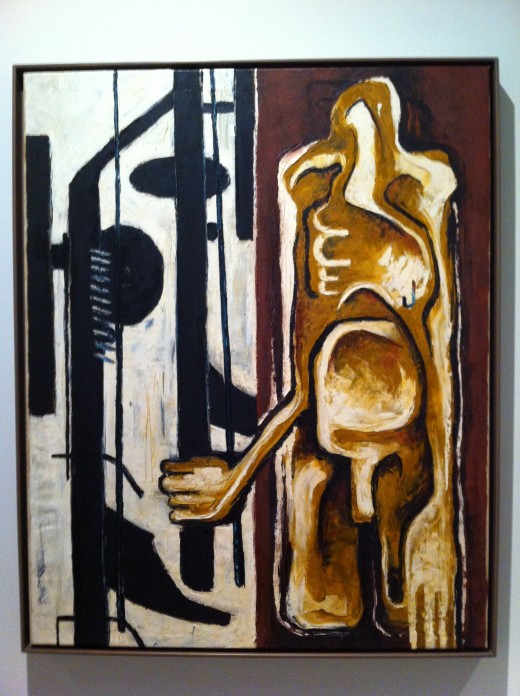
Late 1930s
Further down in the room, figures become more and more abstracted, eventually meshing with the background. This is demonstrated by two paintings I particularly liked. The first, PH-343, Still painted in 1937. The rounded male figure is painted in warm, earthy tones, which contrasts with the more rigid mechanical elements in black and white. While still clearly discernable as a human, there is a new accentuation on inner parts of the body, such as the ribs and the concave of the stomach. The second painting, PH-205, was completed between 1939 and 1940. During this time and shortly thereafter, Still rapidly moves towards the total abstraction of his color field paintings. This piece still demonstrates the element of a figure, but it is no longer identifiable as a human being. To me, the black and blue form seems mechanical, similar to the left hand side of PH-343.
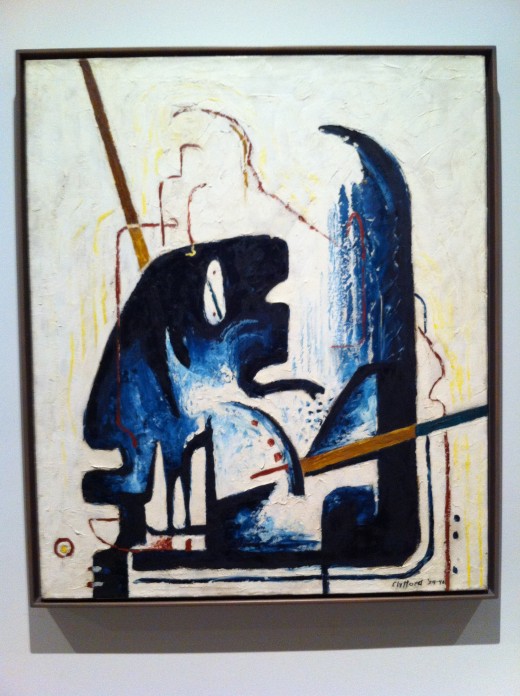
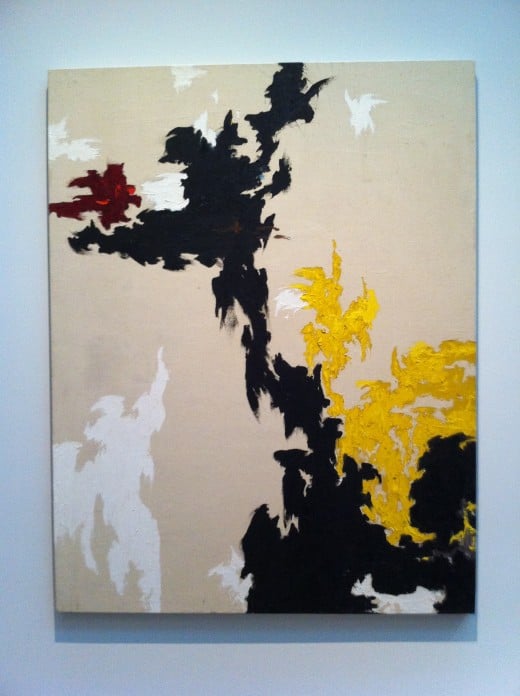
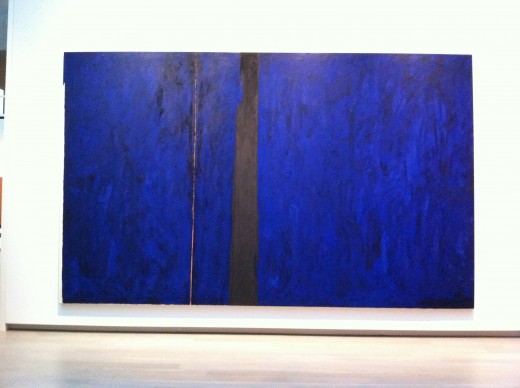
1940s - The Beginning of Abstraction
Clyfford Still’s first true abstractions began in the early 1940s with color field painting. I was very drawn to painting PH-118 for a number of reasons. I suppose it was the brightness of the yellow in contrast with the black that initially drew my eye; from there, the jagged edges of the areas of color easily led my gaze around the whole painting. Upon examining the entire work, I found it interesting that the area of yellow paint was highly texturized, while the rest appeared to be more flat. The texture of the yellow was accomplished with thick swipes of paint, seemingly done with a palette knife, and variation in the light and darkness of the color. In contrast, the black and white shades were probably painted with a brush in much thinner coats. This yellow area, along with the smaller red area, balances the weight of the composition against the neutral black paint, white paint, and tan canvas. This brings another interesting point, which is the use of large areas of blank canvas in Still’s paintings. Personally, I’ve never seen this done before and the idea is very counter-intuitive to my conceptions of traditional painting. I was very intrigued and impressed by how successful these works were because of it, using the bare canvas both for it’s inherent color as well as a sort of negative space.
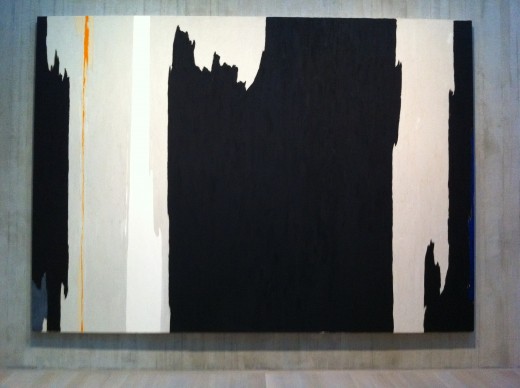
1950s - Dramatic Increase in Scale
During the 1950s, the scale of Still’s works began to dramatically increase. While PH-118 is perhaps 3-4 feet wide by 4-5 feet tall, the next paintings displayed in the museum jump to mural-size scale. I took a particular liking to PH-1123, a very large canvas covered predominantly with black paint. This piece, like PH-118, also utilizes large areas of bare canvas into the overall design. The subtlety of the vertical white block of paint against the light tan color of the canvas is very engaging. While the massive field of black is in stark contrast to the blank canvas, the smaller area of white nearly blends with it. There is a very bright, jagged, vertical orange stripe weighted on the left hand side of the painting, which jumps off of the canvas in contrast with the neutral black, white, and tan surrounding. Upon closer examination, I noticed a small block of grey in the bottom left corner, and a jagged, vertical strip of navy blue on the far right edge of the canvas. These colors blend into the black similar to the way the white blends into the canvas, leaving the orange “lifeline,” as he called them, to protrude and capture the viewer’s attention.
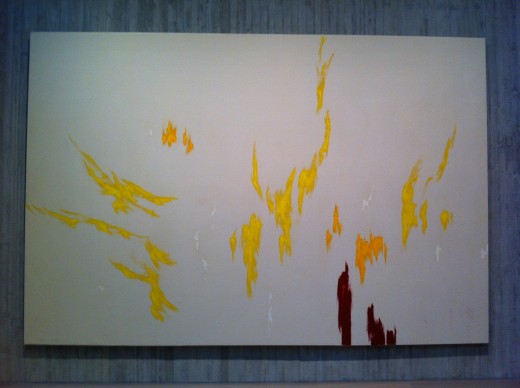
Late Work
From the 1960s until his death in 1980, Still further explored the use of empty space in his paintings. The most extreme example I saw was in PH 1049; approximately 90% of the great, mural-sized canvas is entirely blank. The color palette in the remaining 10% is warm tones; primarily vertical yellow strokes dominate the space, accented by very small bits of white paint. The texture in the yellow is very similar to that in PH-118. The piece is weighted near the bottom right by a small field of orange color just above a slightly larger area of burgundy. To me, there is an awesome simplicity in this piece. The colors and the jagged strokes remind me of fire, but it’s too minimal to be so. It leaves me curious and wondering, but mostly just in awe at the success of such little paint on such a large canvas.
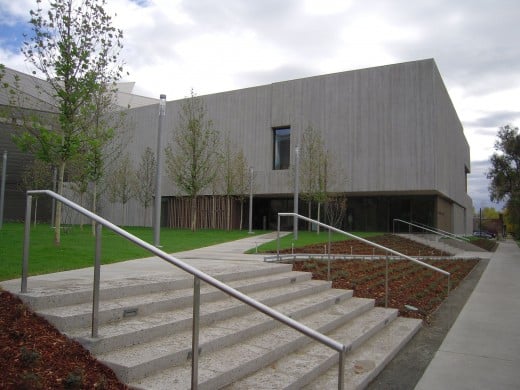
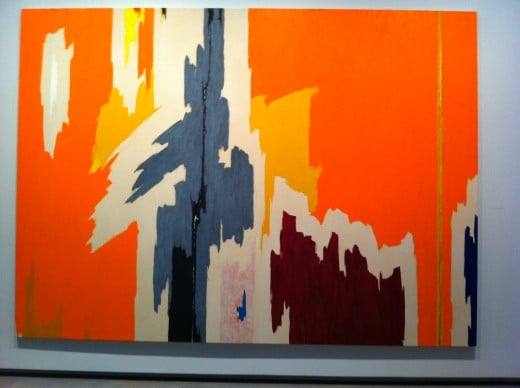
Overall I was wildly impressed by the Clyfford Still Museum. The breadth of work is incredible, and I’ve never before been able to follow an artist’s stylistic development so clearly—it is fascinating to follow such a complete body of work in chronological order. If you are ever in Denver, I would definitely recommend stopping by. Learn more about Still and the museum in the video below:
Clyfford Still Museum - Downtown Denver
© 2014 Niki Hale




